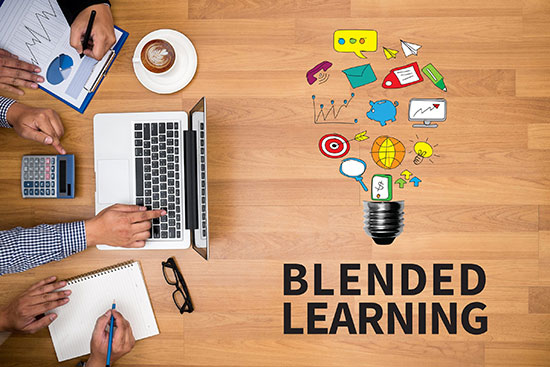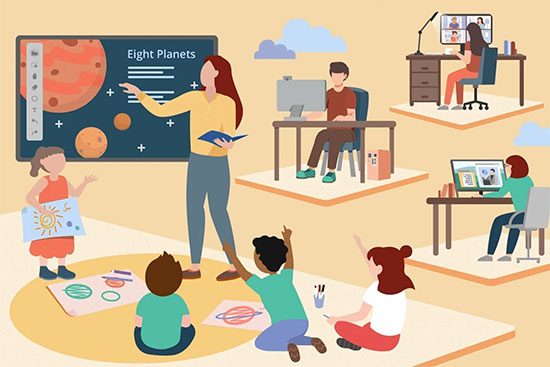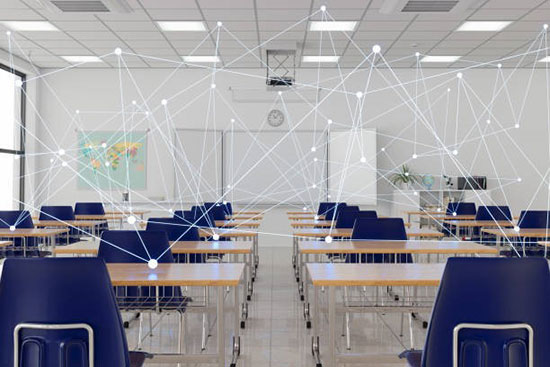What Is Blended Learning? Types and Benefits of Blended Learning: A Unique Guide in 2024
Get Your Free Trial Now!
Introduction to Blended Learning
In the changing face of the educational environment, conventional classroom practices are being supplanted by new approaches that apply the latest technological trends to ultimately enrich the learning experience. Among the ways that have been noticed in the last few years is the incorporation of a blended learning model.
We will explore the query what is blended learning and its idea that it can take many forms; hence, it will be discussed. Also, numerous benefits that it brings for both teachers and learners will be focused on.

What is Blended Learning?

The blended learning model, which includes a blend of class and online methods of learning materials, is progressively being embraced in instructive foundations today. It expects to achieve a harmony between up-close and personal connections and innovation-based assets and, consequently, create a more individualized and adaptable learning climate.
Combined learning calls for the utilization of various instructional approaches, while they are also used with technology in a traditional setting. This blend is the main objective of this approach, which benefits the learners by offering flexibility and helping them adapt to their learning styles and preferences. Now, we shall outline the different types of blended learning that exist, along with a gap analysis, as they tend to be implemented in schools and other educational institutions as they adapt this approach.
Types of blended learning
Rotation Model
In the Rotation Model, students rotate between a few of the learning modalities, such as face-to-face instruction, online learning, and other activities. The station rotation and the lab rotation are some of the most frequent variations. With the station rotation, students move around between the learning stations, and with the lab rotation, time is spent in the computer lab.
Flex Model
Most of the content in the Flex Model is delivered online, allowing the students to take the course at their own pace. A physical tutor comes in as needed, providing support, addressing the specific challenges as they arise, or answering the questions as the learner goes through the online program.
A La Carte Model
The a la carte model represents a situation in which students are taking one or more online classes along with those that are taught using a traditional method. This model of education gives students the autonomy to personalize their learning experience and investigate areas of interest not traditionally offered in their school.
Read Also : GAP ANALYZER
Enriched Virtual Model
The Enriched Virtual Model involves the focus of the majority of study online, but students are expected to routinely attend the face-to-face sessions for supplementary support, collaborative activities, or exams. This model brings the best of both worlds: online learning and in-person interactions.
Benefits of Blended Learning
Now that we have some knowledge about the different kinds of blended learning, let's understand how much of an impact this system has on the educational world.
Personalization of Learning
What is blended learning?It is a learning path to personalized lessons. The hybrid (face-to-face interaction combined with online resources) approach enables teachers to customize content for the specific requirements of each student. Adaptable web resources can have tailored interventions or enrichment activities taken into consideration for each learner's progress and performance.
Flexibility and Accessibility
Through blended learning, students are not limited by both time and space environments, as they can learn whenever they want. Regardless of whether the learning means are through e-modules or supplementary material, the time-and-space barriers to education are broken.
Enhanced Engagement
The biggest drawback of conventional classrooms is that it is a great challenge to maintain student motivation. ‘Blended Learning’ is deemed a solution to the problem of lack of interactivity and multimedia by means of fusion of the interactive and multimedia sections together with the curriculum. What is blended learning? It is a one-of-a kind, pictured, intelligent, and instructive experience that applies a ton of strategies to assist understudies with grabbing their eye, for instance, online video, movements, or client intelligence.
Data-Driven Decision Making
Data about student engagement, progress, and performance is collected by the e-platforms that are used in blended learning. Educators can draw on this data to make sound choices regarding their instructional methods, identify areas to improve, and provide multi-tiered interventions to individual students.
Preparation for the Digital Age
In an era in which all walks of life depend on technology, blended learning gives students the necessary digital competence. What is blended learning? It is a progressive mode of learning that suits tech-savvy digital-age learners, promoting tech savviness and adaptability.
Cost-Effectiveness
Blended learning can alleviate the operational cost burden of educational institutions. The exposure of online systems reduces the overutilization of physical structure and materials. It provides for the use of teachers' time more effectively by letting them concentrate on individualized instruction and personalized assistance.
Conclusions about what is blended learning?
It is an innovative educational method that is infused with conventional educational methodologies and the latest technologies. Rotation models and Flex models, some of the kinds of blended learning, are aimed at giving the students a flexible and customized approach to studying. The advantages of blended learning, let alone personalized learning, student engagement, and the convenience of the digital era, highlight the importance of this mode as a key to the future of education.
With blended learning gaining credibility in educational institutions, it is imperative to acknowledge the fact that it helps to create a vibrant and adaptable learning environment. What is blended learning? It is not just a trending term, but a flip in education that would lead to new opportunities and build an inclusive and active learning environment.
Don’t Miss Out : NEP 2020: A Government's Vision for the future of Education in India Reform

FAQs about what is blended learning?
What is blended learning?
Blended learning is a model of a school system that is a mix of up-close and personal classes and distance learning. It is attempting to create a harmony between in-person education and computerized devices, which could improve the variety of the educational program so that learning will turn out to be more adaptable and customized for every person.
What is the pedagogy of blended learning?
Blended learning is a strategy that incorporates multiple teaching models, like classroom teaching and computer-based learning resources. Students are likely to partake in different types of learning activities like in-person classes, online modules, virtual discussions, and laboratory sessions that are offered by the institution of learning that they have joined.
What kinds and types of blended learning are there?
Blended learning consists of more than one type, which includes a rotation model (such as station rotation or lab rotation), a flex model, an a la carte model, and an enriched virtual model. Individual E types combine a certain mix of face-to-face and virtual classes.